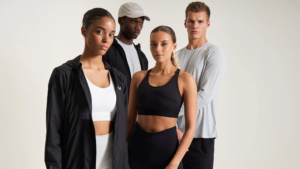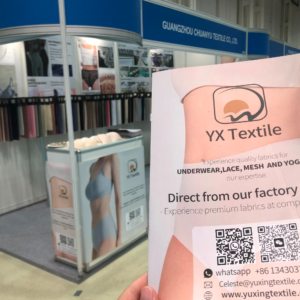
Elastic fabrics are versatile materials used widely in activewear, swimwear, undergarments, and performance costumes. They provide a unique combination of stretch, comfort, and durability. This makes them perfect for garments that need to move with the body. In this article, we will explore the process of making these fabrics. We will also discuss their types, benefits, and applications.
What Are Stretch Fabrics and How Are They Made?
Stretch fabrics consist of fibers that allow them to stretch and return to their original shape. Manufacturers blend spandex (or elastane) with other fibers like polyester, nylon, or cotton. This combination makes textiles with elastic properties. As a result, they are perfect for creating garments that need flexibility and comfort.
Types of Stretch Fabrics and Their Unique Benefits
Elastic fabrics come in various types, each suited to different uses and offering unique characteristics. The most common types of elastic fabrics include:
1.Spandex (Lycra/Elastane)
Spandex is the most common elastic fiber. It stretches up to five times its original length. When combined with other fibers, it creates comfortable, stretchy textiles.
2.Nylon
Blending nylon with spandex creates elastic, durable fabrics. This combination is popular for sportswear and active clothing.
3.Polyester
When blended with elastic fibers, polyester forms a stretchable and durable fabric. Its wrinkle resistance makes it ideal for activewear.
4.Cotton Blends
Cotton alone doesn’t stretch. However, blending it with spandex or elastane results in fabrics that are flexible and breathable. They are perfect for everyday wear.
The Advantages of Using Stretch Fabrics in Activewear and Swimwear
Elastic textiles offer several key advantages:
Comfort and Flexibility
These fabrics move with the body, ensuring comfort during physical activity. As a result, they are perfect for activewear.Shape Retention
They return to their original shape after stretching. This helps maintain the garment’s fit and extends its lifespan.Durability
Stretch materials resist wear and tear. Thus, they are ideal for garments that experience frequent movement.Breathability and Moisture-Wicking
Many of these fabrics wick moisture away from the skin. This keeps the wearer dry and comfortable, especially during exercise.
How Stretch Fabrics Enhance Comfort and Durability
These fabrics are engineered for both flexibility and strength. They stretch without losing their shape, making them reliable for long-term wear. This makes them a top choice for activewear and swimwear.
Applications of Stretch Fabrics in Modern Fashion and Sportswear
Designers use these textiles in a wide range of products, from activewear and swimwear to compression garments. Their versatility and performance make them a must-have in today’s apparel industry.
Elastic fabrics are used in a broad range of applications, both in fashion and functional wear. Here are some of the most common areas where elastic fabrics are used:
Activewear and Sportswear
Elastic fabrics are crucial in sportswear for their flexibility, comfort, and breathability. They allow for a wide range of movement and ensure that garments remain in place during exercise or physical activities. Yoga pants, running tights, and gym wear all heavily rely on elastic fabrics.

Swimwear
The stretchiness and moisture-resistant properties of elastic fabrics make them ideal for swimwear. Spandex and other elastic fibers help swimsuits maintain their shape and provide a comfortable, form-fitting experience.

Undergarments
Elastic fabrics are widely used in the production of undergarments like bras, underwear, and shapewear, where comfort, stretch, and fit are critical. The addition of elastane or spandex allows these garments to stretch and conform to the body, providing a smooth, seamless fit.

Compression Garments
Compression clothing, such as socks, sleeves, and body suits, uses elastic fabrics to provide targeted pressure and support to the body. These garments are often used for medical or athletic purposes to improve circulation or enhance performance.

Fashion and Everyday Wear
Elastic fabrics are not limited to functional wear. They are also widely used in everyday fashion for garments such as leggings, fitted dresses, and skirts, where both comfort and style are essential.

Conclusion
Elastic fabrics are a cornerstone of modern apparel, offering unmatched comfort, flexibility, and durability. Whether it’s in activewear, swimwear, undergarments, or fashion, elastic fabrics are used in various applications, making them a vital part of today’s textile industry. Understanding the different types of elastic fabrics, how they’re made, and their many benefits will help you appreciate their role in providing high-performance, long-lasting, and comfortable clothing.
If you’re looking to design garments that move with the body and maintain their shape over time, elastic fabrics are the way to go.
Contact Us
If you have any questions or would like to learn more about our stretch fabrics and how they can enhance your products, feel free to contact us. We’re here to help!
Facebook:https://www.facebook.com/yofuntex
Product:https://yofuntex.com/products/






